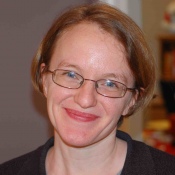Applications in Biology and Medicine
There is a long and fruitful history of joint development between Statistics and Biology and Medicine, with data at the core. For instance, Mendel’s fundamental laws of heredity were entirely based on statistical inference applied to data from carefully designed experiments. Most recently, the advent of novel high-throughput and high-resolution biological assays has allowed the exploration of biological processes on a genomic scale and at the resolution of single cells. Applications range from addressing fundamental science questions (e.g., how does the brain work?) to disease prevention, diagnosis, and treatment. Statistical methods are essential to make sense of the massive amounts of data generated by these biotechnologies.
Our faculty have been at the forefront of research at the interface of Statistics with Biology and Medicine, contributing statistical methods and software for genome sequencing, the study of stem cell differentiation, neuroscience, evolutionary biology, epidemiology, infectious disease modeling, clinical trials, and personalized medicine, among others. A hallmark of the Berkeley approach is our close collaboration with biologists and clinicians and our engagement throughout the data science pipeline, including the framing of questions, study design, exploratory data analysis, and the interpretation, validation, and translation of the results into domain insight.
Our faculty have played an essential role in the creation and growth of the Center for Computational Biology and comprise its largest group (10 of the Center’s 48 faculty).


















